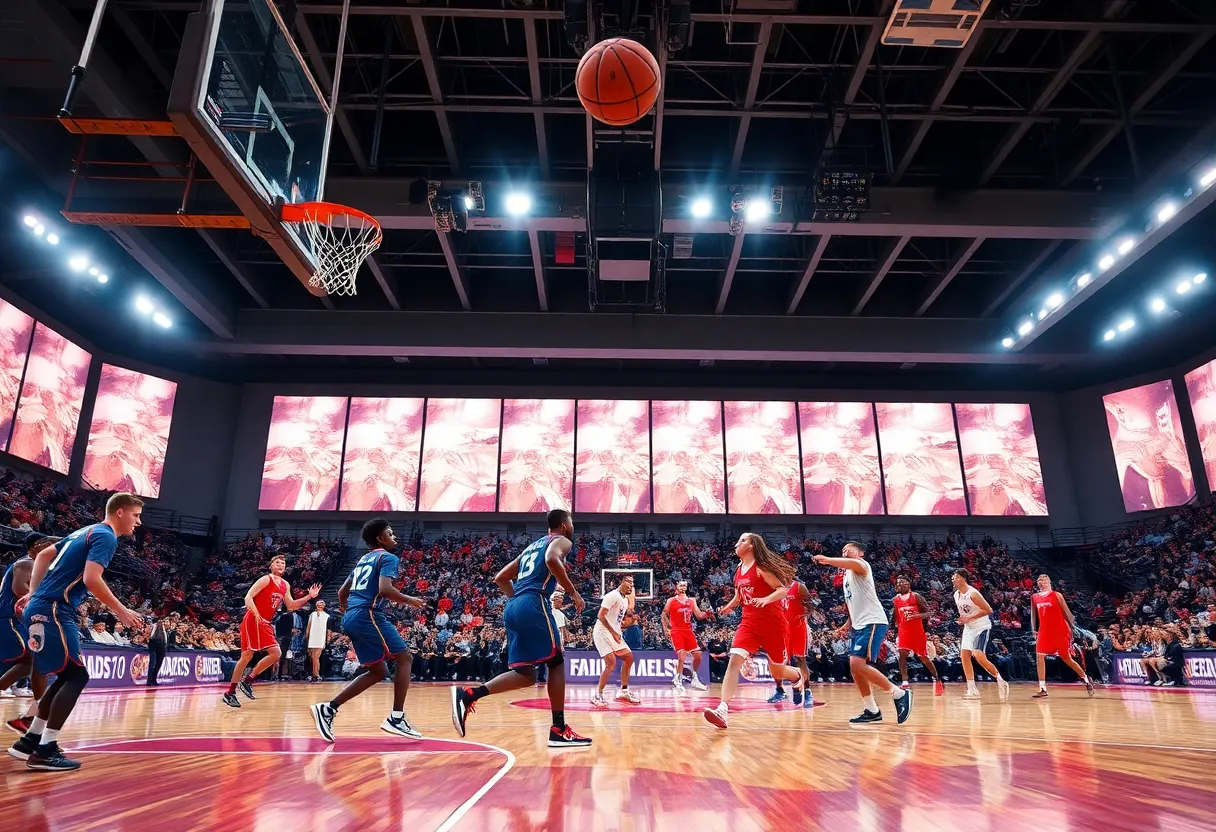Louisville, KY, October 12, 2025
The University of Louisville has disclosed its annual highest-paid employees database, with President Gerry Bradley earning $750,000, followed by athletic director Vince Tyra at $680,000 and the medical school dean at $620,000. The report highlights a 5% increase in executive salaries, prompting discussions about fiscal priorities amid budget challenges. While leaders justify high compensation as necessary to attract talent in revenue-generating areas, faculty unions express concerns over disparities in pay, especially for adjunct professors earning under $50,000.
University of Louisville Reveals Top Earners in Annual Salary Database
Louisville, KY – On October 12, 2025, the University of Louisville released its annual highest-paid employees database, shedding light on executive compensation amid ongoing budget challenges. The disclosure highlights President Gerry Bradley as the top earner at $750,000, followed closely by athletic director Vince Tyra at $680,000 and the medical school dean at $620,000. This public records-based report comes at a time when the university grapples with fiscal priorities, revealing a 5% increase in executive salaries that has ignited discussions across campus.
Salary Breakdown and Key Figures
The database encompasses over 200 positions, with prominent roles in athletics and health sciences dominating the upper echelons due to their revenue-generating potential. Coaches also feature heavily, benefiting from the success of UofL’s sports programs. Officials at the university have justified these figures by pointing to competitive market rates necessary to attract talent in high-impact areas. However, the release underscores disparities, as adjunct professors often earn under $50,000, prompting calls from faculty unions for a more equitable distribution of resources.
Debates on Fiscal Priorities
The timing of the database’s publication aligns with broader financial scrutiny at UofL. As the institution faces state funding cuts, stakeholders are urging a balance between investments in education, research, and administrative leadership. Transparency advocates have praised the release for fostering accountability, allowing the public to examine how funds are allocated. Meanwhile, student government representatives have expressed support for initiatives aimed at raising faculty salaries, emphasizing the need to retain quality educators.
Context of Recent Leadership Changes
This disclosure arrives just days after President Gerry Bradley’s inauguration as UofL’s 20th president, signaling a potential shift toward financial reforms. Bradley’s salary tops the list, reflecting the demands of steering a major public research university through economic pressures. The athletic department’s strong performance, including recent football projections and baseball fundraisers, contributes significantly to revenue, justifying high compensation for figures like Vince Tyra. In health sciences, the medical school’s dean plays a crucial role in advancing clinical and research initiatives, further explaining the elevated pay scales.
Broader Implications for UofL
The salary data provides a snapshot of UofL’s operational priorities, where success in athletics and medicine bolsters the budget but also highlights tensions in resource allocation. Faculty unions argue that while executive pay rises, adjuncts and lower-tier educators face stagnant wages, potentially impacting teaching quality and staff retention. University leaders counter that competitive salaries in key areas ensure the institution remains a leader in revenue-producing sectors, which in turn support academic programs.
As UofL navigates these challenges, the database serves as a tool for informed dialogue. With over 200 entries detailed in public records, it invites scrutiny of how taxpayer and tuition dollars are spent. The 5% salary increase for executives occurs against a backdrop of budget constraints, making the conversation around equitable funding even more pressing. Students, faculty, and administrators alike are watching closely, as decisions made now could shape the university’s trajectory for years to come.
The release also coincides with vibrant campus activities, such as charity baseball exhibitions and women’s soccer matches, which underscore the role of athletics in community engagement and financial health. Yet, amid these events, the focus remains on ensuring that all parts of the university—from classrooms to boardrooms—benefit from sound fiscal management.
Looking Ahead
Moving forward, UofL’s administration faces the task of addressing these disparities while maintaining competitiveness. Calls for balanced investments suggest a multifaceted approach: bolstering faculty support, enhancing research opportunities, and sustaining athletic excellence. The inauguration of President Bradley offers a fresh start, with transparency initiatives like this database setting a precedent for openness. As discussions continue, the university community hopes for reforms that prioritize education and innovation alongside leadership compensation.
In total, this annual report not only lists top earners but also sparks essential conversations about value, equity, and sustainability at one of Kentucky’s flagship institutions. With state funding under pressure, UofL’s ability to adapt will be key to its ongoing success.
FAQ
What is the top salary in the University of Louisville’s 2025 highest-paid employees database?
President Gerry Bradley at $750,000.
Who are the next highest earners after the president?
Athletic director Vince Tyra at $680,000 and the medical school dean at $620,000.
How many positions are included in the database?
Over 200 positions.
What is the percentage increase in executive salaries?
A 5% increase.
What concerns have faculty unions raised?
They argue for more equitable distribution to adjunct professors, who earn under $50,000.
How have UofL officials responded to the salary figures?
They defended the figures, citing competitive markets and revenue-generating roles in athletics and health sciences.
What challenges is the university facing?
State funding cuts, leading stakeholders to call for balanced investments in education and research.
When was the database released?
On October 12, 2025.
What recent event preceded this disclosure?
President Gerry Bradley’s inauguration.
Salary Highlights Chart
| Position | Salary | Key Notes |
|---|---|---|
| President Gerry Bradley | $750,000 | Top earner; recent inauguration |
| Athletic Director Vince Tyra | $680,000 | Revenue-generating role in sports |
| Medical School Dean | $620,000 | Leads health sciences initiatives |
| Coaches (Various) | Varies (Prominent in top ranks) | Due to successful programs |
| Adjunct Professors | Under $50,000 | Subject of equity concerns |




